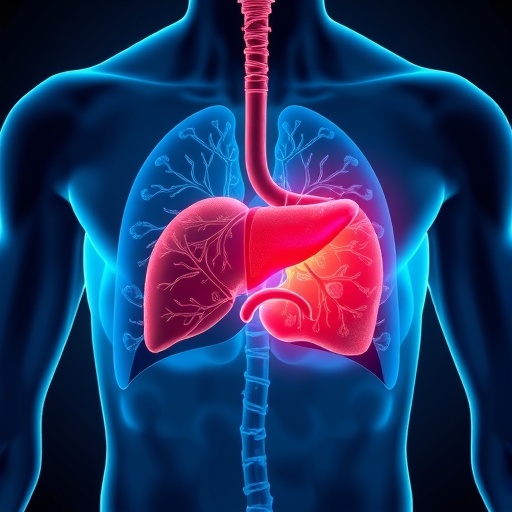
Credit: Tim Schoon, University of Iowa
A majority of American workers spend most of their day sitting and don't get enough exercise, putting them at risk for a variety of chronic diseases ranging from diabetes to cancer.
So, how do you motivate people to get up and exercise more? A team of researchers at the University of Iowa has one potential solution: Turn everyday exercise into a game. To that end, UI faculty and students designed a web-based game that can be played by anyone with a smartphone and a Fitbit.
The co-principal investigators, Lucas Carr, associate professor in the Department of Health and Human Physiology (HHP), and Philip Polgreen, professor in the Department of Internal Medicine, say the results of the pilot study were encouraging. Those results were published this month in the Journal of the American Heart Association.
"We essentially found that people who received the game right out of the gates increased their steps by about 2,200 per day, which is close to walking one mile," Carr says. "Statistically, that's significant. It's also clinically significant."
The game, called MapTrek, was designed by the Computational Epidemiology Research (CompEpi) Group, a collaborative group of students and faculty in the UI computer science, internal medicine, and HHP departments, Polgreen says. The project would not have been possible without the contributions from professors James Cremer and Alberto Segre in the Department of Computer Science, Polgreen adds.
Polgreen says his research involves developing new approaches to monitoring diseases. Recently, that research extended to designing interventions. MapTrek is an example of such an intervention.
Polgreen's CompEpi group was initially awarded a pilot grant from the Fraternal Order of Eagles Diabetes Research Center at the University of Iowa to develop and test a platform that could monitor activity levels of pre-diabetic and diabetic patients. The platform also sent text messages to patients encouraging them to set daily activity goals.
"Our results suggested that goal-setting alone was not enough," Polgreen says. "So, we decided to design a game with challenges and to make the game social: the result is MapTrek."
Here's how MapTrek works: Users sync data from accelerometers–in the case of this study, Fitbits–with the web-based MapTrek game. Using Google Maps, MapTrek then moves a virtual avatar along a map in proportion to the number of steps the participant takes. Participants of the study were grouped together and competed against one another in weekly walking challenges each week.
"You can see what place you're in and see where you're at on this map," Carr says. "Every week, the race changes to a different place in the world–the Appalachian Trail, the Grand Canyon."
Using Google's street view function, users can click and see where they're at in real time, effectively turning the game into a virtual walk or race through different locations. MapTrek also sends users text messages each day to remind them to wear their Fitbit and also to provide encouragement. Users also could take part in daily challenges to earn bonus steps.
"We tried to make it as enjoyable as possible," Carr says. "We want people to wear their Fitbit and we want them to participate in these games."
For the study, 146 participants–sedentary office workers, ages 21-65 who reported sitting at least 75 percent of their workday–were divided into two groups. Both were given Fitbits, but only one group used their Fitbit along with the MapTrek game. Their activity levels were monitored with the Fitbit's activity monitor.
Carr says Fitbits were chosen because they're common and their data was accessible. While they are exploring using other fitness monitors, Carr says MapTrek currently only works with a Fitbit. Fitbit did not contribute to the study.
During the 10-week study, the researchers found that the Fitbit and MapTrek group walked 2,092 more steps per day and completed 11 more active minutes per day compared with the Fitbit-only group. Active minutes are defined as those in which the participant took more than 100 steps.
"If a person can maintain a daily 2,000-step increase, that could result in a clinically significant improvement in their overall health," Carr says. "It's associated with about a 10 percent relative reduction in long-term incidence of cardiovascular disease."
Ultimately, the Fitbit and MapTrek group did not maintain the spike in overall activity throughout the 10-week study. Though the Fitbit and MapTrek users regressed, they were still averaging more steps than the Fitbit-only group by the end of the study. Ultimately, the MapTrek group returned to their pre-study fitness levels, Carr says.
"Over 10 weeks, the gains in activity declined and the two groups looked similar by the end of the study," Polgreen says. "But, we are encouraged by the big initial increase in daily steps and are now looking to improve the game in ways that result in longer changes in behavior."
Polgreen noted that MapTrek, based on the CompEpi group's original work with subjects at high risk for diabetes, is now also being used as part of a National Institutes of Health-funded study to test its effectiveness within that population. Current MapTrek development is focused on making the game even more engaging and interactive.
Carr says more research will be done on sedentary office workers, but they're also looking at clinical populations, including cardiac rehab patients and those suffering from chronic obstructive pulmonary disease.
"The value of this kind of approach is virtually anyone can play it with minimal risk," Carr says. "Nearly everyone can benefit from increased levels of activity."
The study, published July 2, was completed by Carr, Allene Gremaud, and Nicholas Evans from the Department of Health and Human Physiology; Jacob Simmering from the Signal Center for Health Innovation in University of Iowa Health Ventures; James Cremer, Ted Herman, and Alberto Segre from the Department of Computer Science; and Linnea Polgreen from the Department of Pharmacy Practice and Science.
###
Media Contact
Richard Lewis
[email protected]
319-384-0012
@uiowa
http://www.uiowa.edu
Original Source
https://now.uiowa.edu/2018/07/ui-researchers-turn-exercise-game-and-see-encouraging-results http://dx.doi.org/10.1161/JAHA.117.007735





